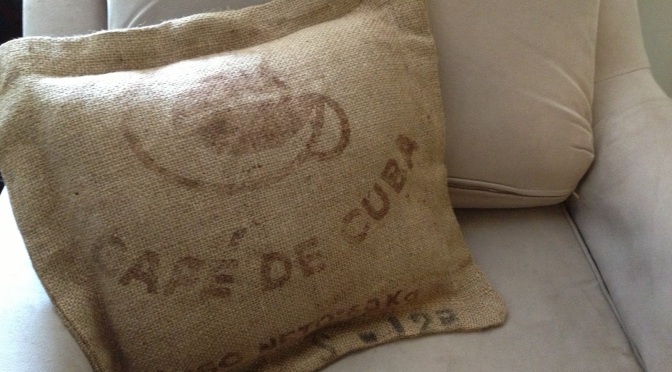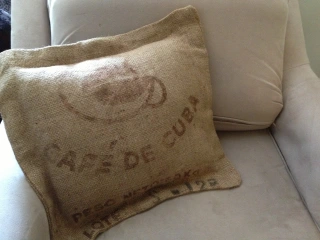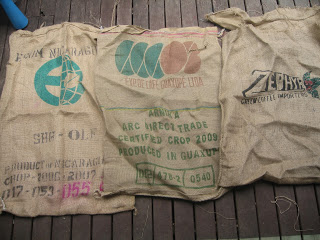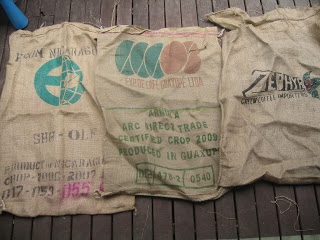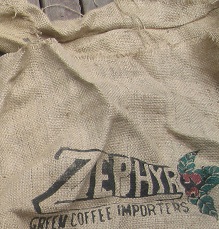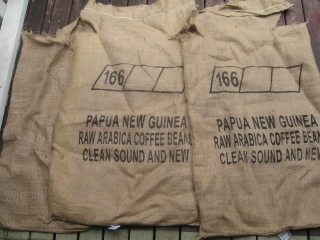One of the questions I most frequently get asked is how to wash Burlap and prevent shedding and fading of the print. So I thought I would do a little case study to explain the process.
Firstly, I never wash my Burlap sacks prior to sewing with them. Often they have been cut open and the loose threads will shed and go everywhere. If you are a clean freak, and just can’t possibly stand the thought of ‘dirty Burlap sacks’ in your craft room, then I recommend hand washing only. Put some detergent and warm water in a tub and then dunk each sack into the water. Swish it around and then rinse it under a tap to remove the detergent, and hang it on the line. If you wring it out, be prepared to iron, iron, iron to get it flat again. The great thing about Burlap is the loose weave so even if you don’t wring it out and just hang it on the line it should still dry in a couple of hours.
That said, let’s now assume you take my advice and don’t wash prior to sewing. Move straight on to making up your item and ensuring you secure all loose edges.
So I have taken the example of this cushion cover I made from a Burlap Sack. I sewed it up and then went ahead and washed it.
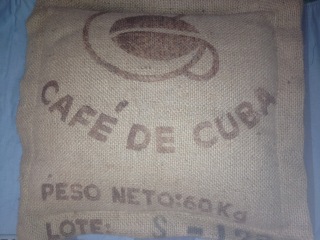 |
| Before washing |
Next step was to heat set the ink. The branding on the sacks is not designed to be permanent, and that is the roulette of sewing with Burlap. Some inks will bind really well to the Burlap and will be there forever, others will wash out. You need to accept this.
However, to give you ink the best chance of surviving the washing process, it is nest to heat set teh ink first. To this I covered the printed area with a sheet of baking paper and then using a hot iron, iron over the top of the baking paper for about 10 seconds on each spot.
Once you have heat set the inks, place the item into an old pillow case and secure the top with a rubber band. Put it in the washing machine on a cold cycle with detergent (no bleach).
When the wash is complete undo the rubber band and pull out your Burlap item. All it to dry flat and then iron it again to get it flat.
I found that my pillow case actual had no shedding. This is because all the raw edges were secured prior to washing. As you can see there are no loose fibres inside the pillow slip when I removed the Burlap.
 |
| The inside of the pillow case once I removed mu cushion cover |
The ink did fade a bit, but I think that just adds to the worn vintage feel, see the before and after photos below (a bit more iron ing required for the after photo!).
 |
| Before |
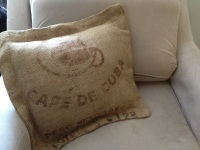 |
| After |
So I hope this has helped ‘shed’ (excuse the pun) some more light on the process of washing Burlap!
I would love to hear any tips or experiences you have had washing Burlap.
